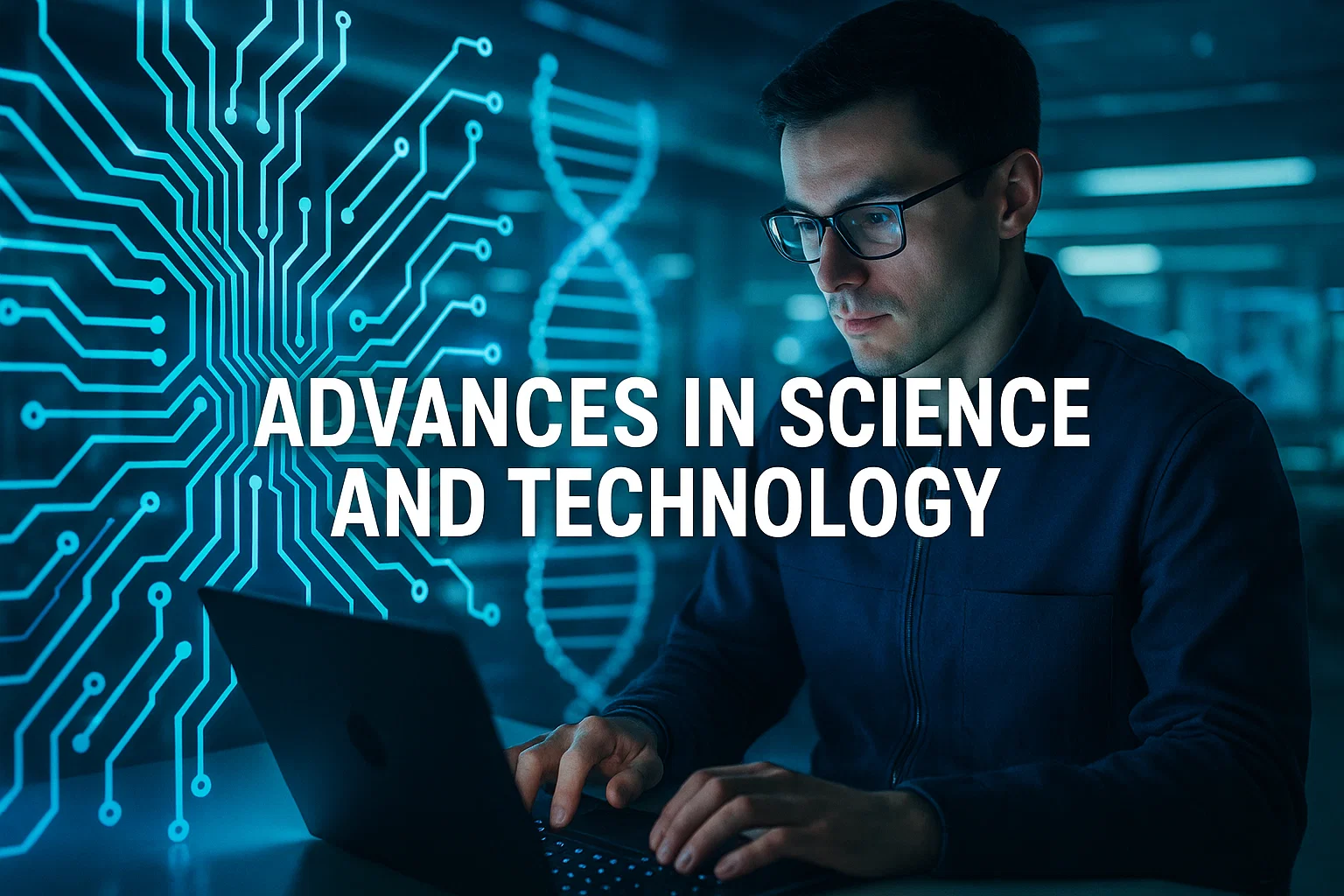Advances in science and technology speed up how you turn ideas into working tools, enable better data-driven decisions, and open new product opportunities for developers and businesses, helping you act on innovation with clear, practical steps.
Introduction
Advances in science and technology shape how you build products, solve problems, and compete, and this post is informational with practical next steps you can use. I’ll explain what those advances are, why they matter, and how you can apply them, with related entities like artificial intelligence and biotechnology mentioned early so you see real-world ties. Expect clear definitions, a hands-on guide, tools you can install, compliance tips, and short code samples you can copy. In my experience, focusing on small experiments, not big bets, helps teams move faster while managing risk. By the end you’ll know where to start, which tools help, and how to avoid common traps.
What advances in science and technology mean, and why they matter
Defining the core concept
When we say advances in science and technology, we mean the steady stream of discoveries, new methods, and engineering breakthroughs that move ideas from theory into everyday tools. This covers everything from improvements in machine learning models, to gene editing methods, to materials science breakthroughs that enable lighter batteries.
Background and context
Science provides the evidence and models, technology turns that evidence into usable products, and together they create feedback loops. Labs publish research, engineers prototype, startups productize, and users create demand. This chain matters because it shortens the time between discovery and impact, letting you capture value faster.
Why it matters to you
- Faster product cycles, lower costs for experiments, and new markets.
- New tooling for automation, customization, and scale, like AI-assisted development.
- Competitive advantage when you adopt responsibly.
How it affects teams: better data tools mean more reliable decisions. How it affects products: component-level improvements can radically shift product design.
How to apply advances in science and technology, step-by-step
Follow this practical guide to test and adopt an advance in your project.
- Identify a relevant advance
- Scan reputable sources, conferences, or vendor docs for advances in your domain, for example AI model updates or new sensors.
- Run a narrow experiment
- Choose a single use case, define success metrics, allocate a small budget.
- Prototype quickly
- Build a minimal proof of concept, measure outcomes, iterate.
- Assess integration costs
- Consider compute, tooling, staff skills, and compliance.
- Scale or pivot
- If metrics are positive, plan phased rollout; if not, document lessons and pivot.
Example: Adding a small AI feature
- Choose a lightweight model for inference.
- Build a 1-2 day prototype that calls the model via API.
- Measure latency and user value.
- Decide to ship or iterate.
Copy-paste code example (Python) — quick API prototype
# python
# Minimal example: call a hypothetical ML inference API
import requests
API_URL = "https://api.example.com/infer"
API_KEY = "your_api_key_here"
def run_inference(payload):
try:
resp = requests.post(API_URL, json=payload, headers={"Authorization": f"Bearer {API_KEY}"}, timeout=10)
resp.raise_for_status()
return resp.json()
except requests.RequestException as e:
# minimal error handling
print("Inference request failed", e)
return None
# Example usage
result = run_inference({"text": "Summarize this paragraph."})
print(result)
Explanation: This snippet shows a minimal pattern for prototyping an ML feature, with basic error handling so your experiment survives network glitches.
Copy-paste code example (Node.js) — small data pipeline
// node
// Simple fetch to a data processing endpoint
const fetch = require("node-fetch");
async function processData(payload) {
try {
const res = await fetch("https://api.example.com/process", {
method: "POST",
body: JSON.stringify(payload),
headers: { "Content-Type": "application/json", "Authorization": "Bearer YOUR_KEY" },
timeout: 10000
});
if (!res.ok) throw new Error(`Status ${res.status}`);
return await res.json();
} catch (err) {
console.error("Processing failed", err.message);
return null;
}
}
// Example
processData({sensor: "temp", value: 22.5}).then(console.log);
Explanation: Use this node pattern to quickly chain a sensor or user event into a processing API for experiments.
Best practices, tools, and quick install tips
Adopt advances safely and practically with good habits, and pick tools that reduce friction.
Best practices
- Start with small, measurable experiments, not large rewrites.
- Maintain reproducible environments, use containers or reproducible stacks.
- Document assumptions and results, short and searchable.
Recommended tools and quick tips
- Tool: Jupyter / Colab
- Pros: fast prototyping, inline visuals, broad community.
- Cons: not production-ready, session limits.
- Install/start tip: open a new notebook and pin required libraries in the first cell.
- Tool: Docker
- Pros: reproducible environments, easy sharing.
- Cons: learning curve for orchestration.
- Install/start tip: create a small Dockerfile for your prototype, run with
docker run -p 8000:8000.
- Tool: GitHub Actions
- Pros: automated tests and deploy pipelines, integrates with repos.
- Cons: config can be verbose for complex flows.
- Install/start tip: add one workflow that runs tests on each push.
Pros and cons summary
- Speed vs. stability: prototypes are fast but need hardening before production.
- Cost vs. capability: advanced compute may cost more but accelerate results.
Challenges, legal and ethical considerations, troubleshooting
As you adopt advances in science and technology, watch out for risk, and follow compliance steps.
Common challenges
- Data quality and bias in models.
- Integration complexity with legacy systems.
- Cost overruns from compute or data storage.
Legal and ethical checklist
- Data privacy: ensure data collection complies with privacy laws.
- Consent: confirm user consent when required.
- Transparency: document model behavior and known limits.
- Security: protect keys, use least privilege.
Compliance checklist (clear, actionable)
- Map personal data flows, label sensitive fields.
- Use encryption at rest and in transit.
- Log and monitor access to sensitive systems.
- Have a rollback plan for faulty releases.
- Keep a data retention policy and delete when appropriate.
Troubleshooting tips
- Reproduce errors locally with sample data.
- Use feature flags to disable risky features quickly.
- Monitor user metrics after release, not just system metrics.
Alternatives
If a particular advance is too risky, consider managed services or third-party APIs that absorb compliance and upkeep, or delay adoption until maturity improves.
Many industry guidelines emphasize responsible data practices, and organizations are advised to document data flows and consent models to reduce risk. (Google)
Practical SEO and content strategies focus on clear, verified claims and source linkage to maintain trust and discoverability. (Moz)
Conclusion, summary, and CTA
Advances in science and technology bring real, usable opportunities for you to build better products, faster. Start with small experiments, measure what matters, pick reproducible tools, and follow a clear compliance checklist to reduce risk. Key takeaways: start small, measure early, automate safely, and document everything.
Welcome to Alamcer, a tech-focused platform created to share practical knowledge, free resources, and bot templates. Our goal is to make technology simple, accessible, and useful for everyone. We provide free knowledge articles and guides in technology, offer ready-to-use bot templates for automation and productivity, and deliver insights to help developers, freelancers, and businesses. For custom development services for bots and websites, reach out and we’ll help you build the next practical, production-ready feature.
External resources
- Guidance on responsible data use and developer best practices: Google guidelines.
- SEO and content quality tips: Moz resources.
- Competitive research and keyword tools: SEMrush.
- Official docs for major APIs: official product documentation.
Bold takeaways
Start with experiments, not big rewrites., Measure user value, not just technical metrics., Document data and compliance decisions.
FAQs
What is advances in science and technology?
Advances in science and technology are the new discoveries and engineering solutions that move ideas into practical tools, enabling faster development, improved products, and new services you can adopt in projects.
How do I choose which advances to adopt first?
Pick advances that solve a clear pain point, have measurable ROI, and fit your team skills. Run a narrow experiment, measure outcomes, and only scale if results meet your predefined metrics.
How can startups budget for new tech experiments?
Allocate a small, fixed experiment budget, use managed services to reduce upfront costs, and require success criteria before expanding spending.
Are there legal issues when using AI or biotech tools?
Yes, you must consider data privacy, consent, export controls, and industry-specific regulations. Add compliance checks early in any project plan.
Which metrics should I track during experiments?
Track user value metrics like conversion, task completion, and retention, plus technical metrics like latency and error rates, and cost metrics such as compute spend per user.
Can small teams use advanced models affordably?
Yes, by using efficient model families, batching inference, using serverless pricing, or managed APIs to reduce engineering overhead.
What are quick wins for applying advances in science and technology?
Automate repetitive tasks, add a lightweight AI assistant for internal workflows, or prototype a data-driven feature for a top user pain point.
What are common pitfalls to avoid?
Avoid over-optimizing models before validating user value, skip poor data hygiene, and ignore compliance until late in the process.
How do I make experiments reproducible?
Use containers, lock dependencies, version datasets, and store experiment configs in code so you can rerun tests reliably.
Should I consult a professional for compliance?
Yes, consult legal or compliance professionals when handling personal data, regulated industries, or cross-border data flows.
Compliance & disclaimer
Information here is general and educational, not legal or medical advice. For specific compliance, privacy, or regulatory guidance, consult a qualified professional. Follow platform terms of service and applicable privacy laws like GDPR or CCPA when processing personal data.



